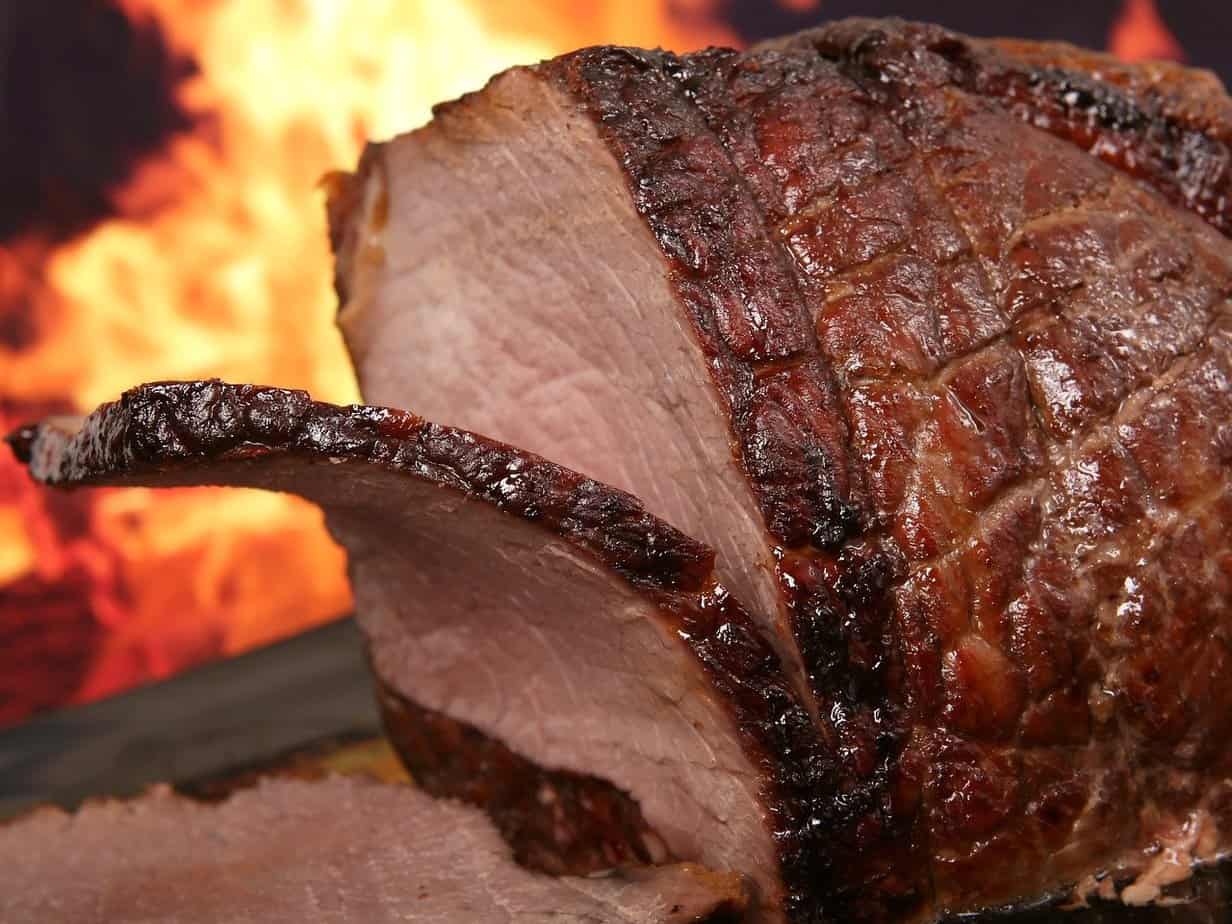Cooking pushes the juices in the meat fibers toward the center and away from the heat source. Resting allows the juices to be reabsorbed and redistributed. But how can you rest meat without it getting cold?
Meat may be loosely covered under foil, and kept on a hot plate, to keep it warm while resting. This technique prevents the loss of juices when the meat is cut and ensures that it is tasty, tender, warm, and juicy.
5 best and easy ways to rest meat without it getting cold
- Heated plates and dishes
- Tenting meat
- Over rack or warmer
- Lid
- Cooler
The first and probably most important question to address is: What is the purpose of resting meat? Amino acids make up the protein chains that make up meat. During the cooking process, amino acids undergo a change called denaturation.
These changes occur more rapidly the higher the temperature to which the meat is exposed. At 120°F, the meat slowly becomes tender. This causes the meat to become firmer.
The size of the meat will determine the resting time and method. High-temperature cooking methods such as roasting, broiling, or grilling require that the meat rest, while cooking at lower temperatures requires less time to rest. Also, braised meats do not require resting time.
Heated dish or plate
Everyone has plates and dishes on hand every time time. Using them is very straightforward.
Remove the meat from the oven, grill, or broiler and place it on a preheated dish or plate to retain heat. The residual heat in will continue to cook the meat after it is removed from the grill or pan. This is called carry-over cooking. However, placing the meat on a preheated dish will not cook the meat further. A heated dish or plate will maintain the temperature of the meat, thus prolonging the time the meat stays warm.
Ceramic cookware is ideal because this cookware retains heat for a longer period of time, sometimes up to 30 minutes. This method works well for smaller cuts of meat such as steak. Additional steps are required for larger pieces of meat. Small cuts do not require much time to rest. A period of 5 – 6 minutes should be sufficient.
Place the dish in the oven for 15 minutes at the lowest temperature. 150 to 200 F (65-90C) should be sufficient. Alternatively, you can use a large enough warming drawer or a toaster oven. You can also microwave the dishes for 1 – 2 minutes.
Tenting meat
In tenting meat, the meat is placed under aluminum foil. In this way, the meat retains some of the heat without being cooked any further. The foil should be placed loosely over the meat. This method is ideal for larger cuts of meat. A warm tray is not essential. The meat can also be placed on a wooden board or a serving dish.
Using an oven rack or warmer
This is a slightly more advanced technique, as the meat must be removed from the oven before the desired degree of cooking. Place the meat on a warming rack to keep it warm. However, the meat is still cooking, so this method can only be used for a short time and only when the meat is not cooked all the way through.
Cover the meat with a lid
Smaller pieces of meat like pork chops, burgers, fish, and chicken breasts can be placed on a preheated dish and may be covered with a lid. If the resting time is 5 minutes. This is a reliable way to keep the meat warm while it rests.
Best time frame for resting chicken
Larger chicken pieces require a longer resting time. A whole chicken should rest for 15 – 20 minutes, while smaller pieces like chicken breasts only need 5 – 10 minutes to rest. The chicken can rest loosely covered under aluminum foil to keep it warm during the resting period.
Best time frame for resting a piece of beef
Larger meats (medium sized roast) such as tenderloin roast, rib roll roast, ribeye roast and striploin should rest for at least 20 minutes before carving. Five minutes per pound is a good rule of thumb.
Thicker cuts of steak should be rested 5 – 7 minutes each.
How to keep meat warm for hours
If meat must be kept warm for a long period of time, wrapping it tightly in aluminum foil is a good method. Place two towels in a cooler and place the meat on top of the towels. Then place two more towels on top of the meat and close the lid. This will keep the meat warm for hours.
Should you rest meat covered or uncovered
Some meats form a crust during the cooking process. Although resting is an important step, some feel that it ruins the crust on the meat and causes it to become soft, and this is a fact. The foil enhances this softening effect.
The moisture from the steam allows the dehydrated crust to moisten. The alternative would be to simply let the meat rest on a preheated plate. However, this risks cooling the meat quickly. Another option would be to crisp the meat again just before serving. However, be careful not to overcook it. Just reheat the meat by blasting it in the oven, to crisp it up again.
How to rest meat without foil
Heat lamps are often used in restaurants to keep food warm and are a good source of heat. However, if the goal is simply to keep the meat warm while it rests, the lamp should only be used for short periods of time. Infra-red lamps are ideal for this purpose as the lamp keeps food warm without cooking it.
However, using a lamp for longer periods can cause the meat to continue cooking, which will defeat the purpose of the lamp.
Placing meat on a preheated ceramic dish will achieve the same result, but as mentioned earlier, the food will cool faster. The good news is that some meats do not need to be covered, while others can benefit.
Conclusion
Your cooking process begins with a carefully selected piece of meat. You spend time seasoning it and cooking it to perfection. Taking a few extra minutes to let the meat rest before serving makes all the difference in flavor, tenderness, and juiciness.

